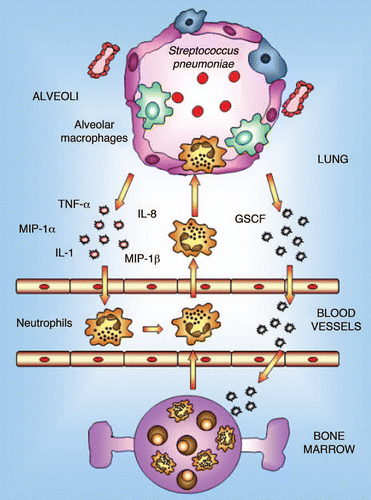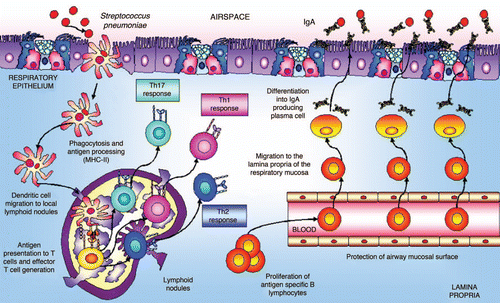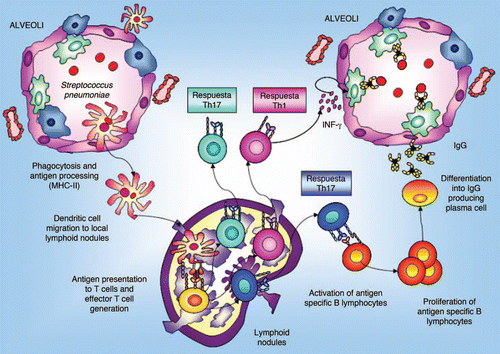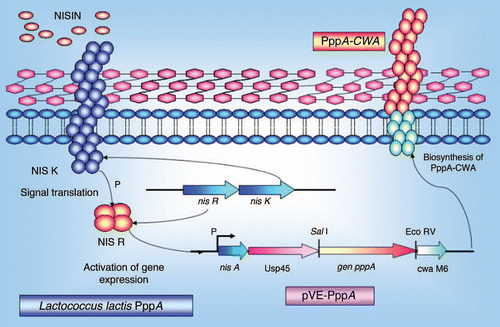Figures & data
Figure 1 Innate immune response in lung. Alveolar macrophages constitute the first line of phagocytic defense against infectious agents and play a prominent role in lung immunity by initiating inflammation and immune responses. In the event that invading pathogens are too virulent or represent too large a load to be contained by macrophages alone, alveolar macrophages are capable of generating mediators that orchestrate the recruitment of large numbers of neutrophils from the pulmonary vasculature into the alveolar space. These neutrophils provide auxiliary phagocytic capacities that play a critical role in host defense against pathogens.

Figure 2 Antigen uptake and migratory pattern induction in the airways. The production of specific IgA in the respiratory tract during an infectious process is very important because it prevents colonization of mucosal sites and subsequent spreading into the systemic circulation.

Figure 3 Antigen uptake and migratory pattern for immune induction in deep lung. IgG production plays an important role in the protection against pathogens that reach the alveolar space. Opsonizing IgG antibodies are important for complement fixation and for improvement in the efficiency of macrophages killing. At the systemic level, immune activation also induces production of antibodies responsible for preventing the passage of pathogens to the blood.

Figure 4 Schematic representation of the nisin-controlled gene expression (NICE) system (40) used to express the recombinant PppA pneumococcal protein in L. lactis. L. lactis NZ9000 cells containing the signal transduction genes nisK and nisR in their chromosome were transformed with a plasmid carrying the pppA gene under the control of the inducible promoter PnisA. Expression of the PppA recombinant protein was induced by the addition of sub-inhibitory amounts of the nisin and its insertion in the cell wall was mediated by the secretion (sec) and cell wall (CW) anchoring signals.

Table 1 Lactic acid bacteria as vaccine vehicles against S. pneumoniae